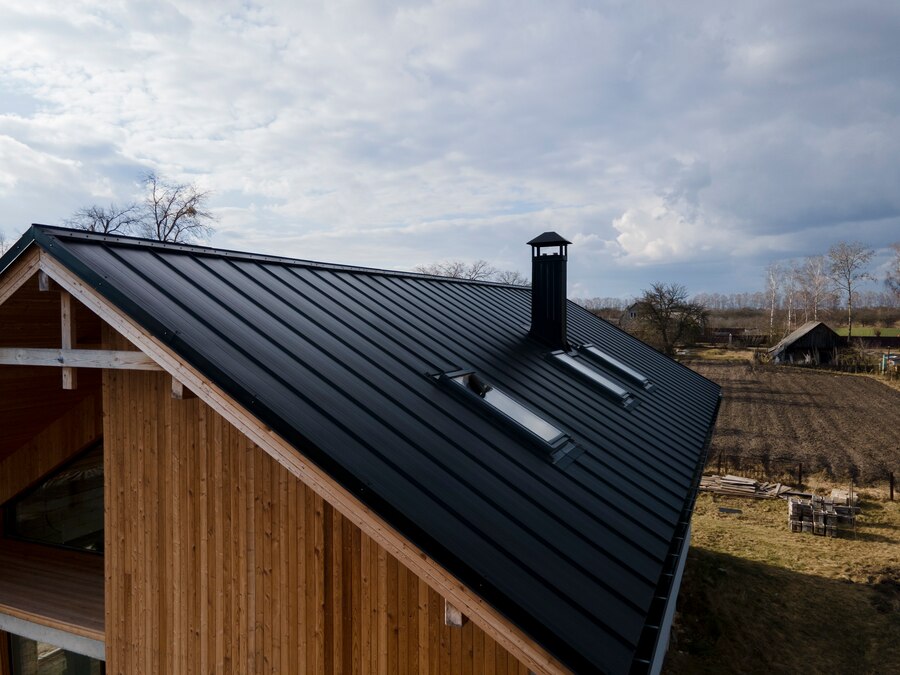When it comes to roofing, not all roofs are created equal. Whether you own a home or a business in Maryland, choosing the right roofing system is essential for durability, efficiency, and cost-effectiveness. But what exactly sets residential roofing in Maryland apart from commercial roofing in Maryland?
In this comprehensive guide, we’ll break down the key differences, materials used, maintenance requirements, and factors to consider when selecting the right roofing system for your property.
What is Residential Roofing?
Residential roofing refers to roofing systems designed for single-family homes, townhouses, and smaller multi-family buildings. These roofs are typically sloped and use materials like asphalt shingles, metal, or tile.
Homeowners in Maryland often prioritize aesthetics, durability, and weather resistance when choosing a roofing system. Since Maryland experiences a variety of weather conditions, including heavy rainfall, snow, and humidity, selecting a reliable residential roof is essential.
Common Residential Roofing Materials
- Asphalt Shingles – The most popular choice due to affordability, ease of installation, and variety of styles.
- Metal Roofing – Long-lasting and energy-efficient, great for handling Maryland’s variable weather.
- Tile Roofing – Offers a classic look, particularly in Mediterranean or Spanish-style homes.
- Slate Roofing – Extremely durable and luxurious but requires a strong structural foundation.
What is Commercial Roofing?
Commercial roofing is designed for businesses, warehouses, shopping centers, and large buildings. Unlike residential roofs, commercial roofs are usually flat or have a low slope to accommodate HVAC systems, solar panels, and other utilities.
Since commercial buildings require strong and long-lasting protection, the materials used in commercial roofing in Maryland are different from those in residential properties.
Common Commercial Roofing Materials
- TPO (Thermoplastic Polyolefin) – A popular, energy-efficient roofing material resistant to UV rays and chemicals.
- EPDM (Ethylene Propylene Diene Monomer) – A rubber-based roofing material known for its durability and weather resistance.
- PVC (Polyvinyl Chloride) Roofing – Offers high resistance to chemicals, fire, and water.
- Modified Bitumen – A flexible and durable asphalt-based roofing material.
- Built-Up Roofing (BUR) – Made of layers of tar and gravel, providing excellent protection against the elements.
Key Differences Between Residential and Commercial Roofing
1. Roof Design & Structure
- Residential Roofing: Typically steep-sloped, allowing rainwater and snow to drain off easily.
- Commercial Roofing: Usually flat or low-sloped to accommodate HVAC systems, solar panels, and drainage solutions.
2. Materials Used
- Residential Roofing: Asphalt shingles, metal, tile, and slate are common.
- Commercial Roofing: TPO, EPDM, PVC, modified bitumen, and BUR are frequently used.
3. Installation Process
- Residential Roofing: Faster installation due to smaller roof size and straightforward material application.
- Commercial Roofing: More complex installation with multiple layers, insulation, and specialized sealing.
4. Maintenance Requirements
- Residential Roofing: Requires regular inspections, gutter cleaning, and occasional repairs.
- Commercial Roofing: Needs frequent inspections due to flat surfaces, which are more prone to water pooling and leaks.
5. Cost Considerations
- Residential Roofing: Generally more affordable due to simpler materials and installation.
- Commercial Roofing: Higher initial costs but often longer-lasting and energy-efficient, leading to cost savings over time.
Factors to Consider When Choosing a Roofing System in Maryland
1. Weather Conditions
Maryland experiences heavy rain, snow, and humid summers. Ensure your roofing material is durable and weather-resistant.
2. Energy Efficiency
For both residential and commercial buildings, choosing an energy-efficient roof can reduce heating and cooling costs. Reflective materials like metal roofing and TPO can help lower energy consumption.
3. Longevity & Durability
Consider the lifespan of roofing materials before making a decision. While asphalt shingles last 20-30 years, metal and slate roofs can last over 50 years with proper maintenance.
4. Maintenance & Repairs
Factor in long-term maintenance costs. Commercial roofs often require professional inspections and repairs due to their complexity.
5. Aesthetic Appeal
For residential properties, the appearance of the roof plays a major role in curb appeal. Choose a material that complements your home’s architecture.
Choosing the Right Roofing Contractor in Maryland
Whether you need residential roofing in Maryland or commercial roofing in Maryland, working with an experienced roofing contractor is crucial. Look for:
A licensed and insured roofing company
Positive customer reviews and references
Experience in both residential and commercial projects
Warranty offerings for materials and labor
A professional contractor will help you select the best roofing material, provide a detailed estimate, and ensure high-quality installation that meets Maryland’s building codes.
Conclusion
Understanding the differences between residential roofing in Maryland and commercial roofing in Maryland helps property owners make informed decisions when selecting a roofing system.
Residential roofs prioritize aesthetics and affordability, while commercial roofs focus on durability and functionality. No matter which type of roofing you need, choosing the right materials, considering energy efficiency, and hiring a professional roofing contractor will ensure long-term protection for your property.
If you’re looking for expert roofing services in Maryland, reach out to a trusted local contractor today for a consultation and estimate.
FAQs
1. How often should I inspect my roof in Maryland?
It’s recommended to inspect residential roofs at least once a year and commercial roofs twice a year, especially before winter and after heavy storms.
2. Which roofing material lasts the longest?
Slate and metal roofs have the longest lifespan, lasting 50+ years with proper maintenance.
3. Is commercial roofing more expensive than residential roofing?
Yes, commercial roofing is usually more expensive due to the larger surface area, specialized materials, and complex installation process.
4. Can I use residential roofing materials for a commercial building?
In most cases, no. Commercial buildings require flat roofing materials that handle water drainage and foot traffic better than traditional residential materials.
5. What are the signs that my roof needs replacement?
For residential roofs, missing shingles, leaks, and excessive granule loss indicate replacement is needed. For commercial roofs, pooling water, cracks, and membrane damage are warning signs.

